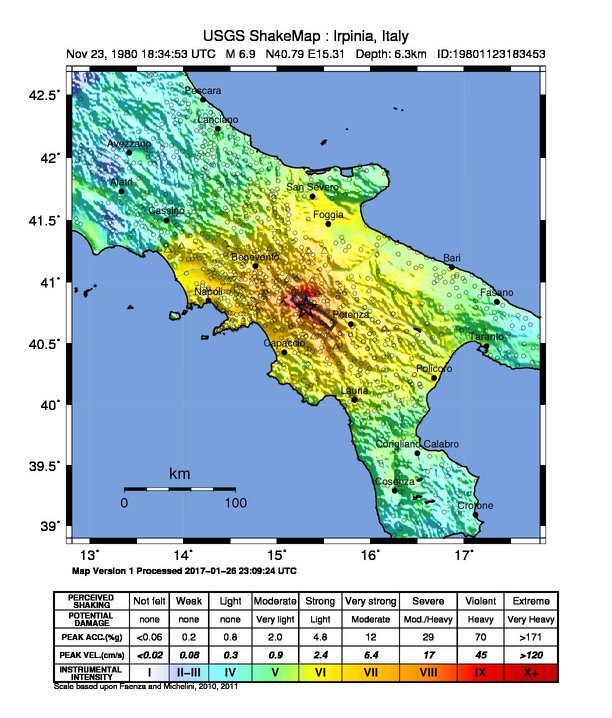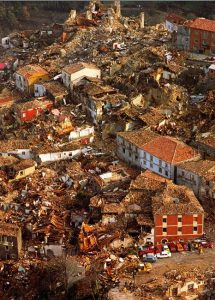
The 1980 Irpinia Earthquake: Reflections and Memories 43 Years Later
A Catastrophe that Changed Italy: The Irpinia Earthquake and Its Legacy
A Tragedy that Marked History
On November 23, 1980, Italy was hit by one of the most devastating earthquakes in its recent history. The Irpinia earthquake, with its epicenter in the Campania region, had tragic consequences, leaving an indelible mark on the country’s collective memory.
Devastation and Panic
With a magnitude of 6.9, the quake caused the collapse of thousands of buildings, leaving more than 2,900 dead, about 8,000 injured and more than 250,000 homeless. The provinces of Salerno, Avellino and Potenza were the hardest hit, with towns and communities destroyed in a matter of moments.
![Irpinia 1980]() Chaos and Lack of Coordination in Relief Efforts
Chaos and Lack of Coordination in Relief Efforts
Rescue operations were immense and complex. In the immediate aftermath of the earthquake, there were significant difficulties and delays in managing the emergency. The lack of a coordination plan led to a fragmented and disorganized relief response, with volunteers and local facilities mobilizing spontaneously without clear directives. Many survivors had to wait days before aid arrived due to logistical difficulties and the vastness of the affected area.
Pertini’s Message and the National Response
The critical situation was highlighted by President Pertini in a televised message on Nov. 26. His denunciation of the delay in relief efforts and failures in state action elicited a strong national reaction, calling for unity and solidarity to overcome the crisis. Pertini’s visit to the affected areas symbolized the government’s empathy and closeness to its citizens in distress.
The Appointment of Giuseppe Zamberletti
Faced with the chaos of the first few days, the government reacted by appointing Giuseppe Zamberletti as extraordinary commissioner, a decisive move that made it possible to reorganize relief efforts and improve dialogue with local authorities. His action was crucial in restoring order and effectiveness to relief operations.
The Birth of the Civil Defense Department
This tragic event triggered a reflection on the need for effective relief coordination. In February 1982, Zamberletti was appointed Minister for Civil Defense Coordination, and in the following months the Civil Defense Department was established. This marked a turning point in emergency management in Italy, introducing a more structured and prepared approach.
A Lesson in Resilience and Solidarity
Today, decades later, the Irpinia earthquake remains a grim reminder of human vulnerability in the face of the forces of nature. Affected communities continue to honor the memory of the victims and reflect on lessons learned, in hopes of being better prepared to deal with any future disasters.
The 1980 earthquake was not only a tragedy, but also a starting point for new awareness in emergency management. Italy has demonstrated remarkable resilience, learning from the tragedy and improving its ability to respond to natural disasters. The human solidarity and national unity that emerged in those difficult times remain powerful examples for all countries facing natural disasters.


 Chaos and Lack of Coordination in Relief Efforts
Chaos and Lack of Coordination in Relief Efforts